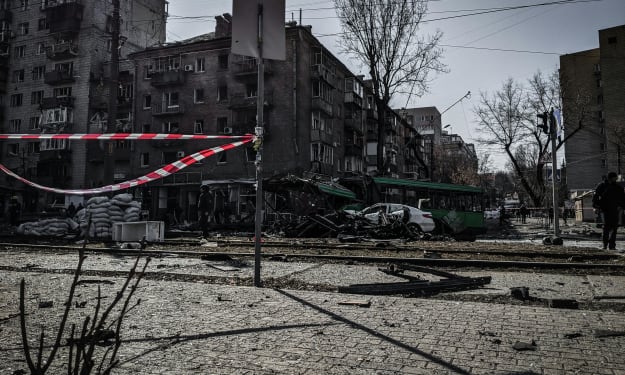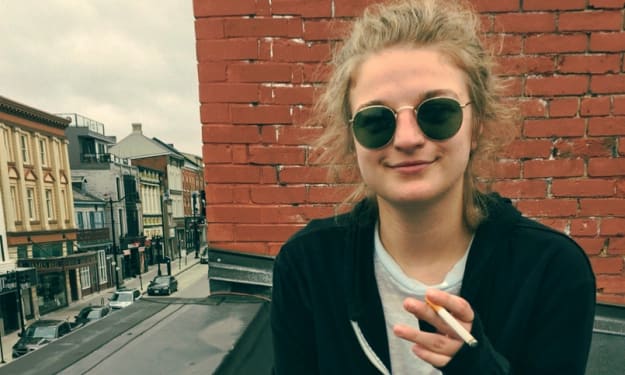Content warning
This story may contain sensitive material or discuss topics that some readers may find distressing. Reader discretion is advised. The views and opinions expressed in this story are those of the author and do not necessarily reflect the official policy or position of Vocal.
Unlocking the Secrets: Mastering the Art of Creating Brighter Videos
The Art of Captivating Visual Narratives

At the point when Google presented Night Sight on the Pixel 3, it was a disclosure.
Maybe somebody had in a real sense turned on the lights in your low-light photographs. Already unimaginable shots became conceivable — no stand or deer-in-the-headlights streak required.
After five years and taking photographs in obscurity is routine — pretty much every telephone all over the cost range accompanies a night method of some sort. Video, however, is an alternate story. Night modes for still photographs catch different edges to make one more brilliant picture, and it's simply impractical to reorder the mechanics of that component to video which, by its tendency, is as of now a progression of pictures. The response, as it is by all accounts recently, is to approach man-made intelligence.
At the point when the Pixel 8 Ace was sent off this fall, Google reported an element called Video Lift with Night Sight, which would show up in a future programming update. It utilizes simulated intelligence to handle your recordings — bringing out additional detail and upgrading variety, which is particularly useful for low-light clasps. There's only one catch: this handling happens in the cloud on Google's servers, not on your telephone.
As guaranteed, Video Lift began showing up on gadgets a long time back with December's Pixel update, including my Pixel 8 Expert survey unit. Furthermore, it's beneficial! However, it's not exactly the turning point that the first Night Sight was. That talks both to how noteworthy Night Sight was the point at which it appeared, as well as the specific difficulties that video presents to a cell phone camera framework.
Video Lift works like this: first, and urgently, you want to have a Pixel 8 Expert, not a standard Pixel 8 — Google hasn't answered my inquiry concerning why that is. You turn it on in your camera settings when you need to utilize it and afterward begin recording your video. Whenever you're finished, the video should be reared up to your Google Photographs account, either consequently or physically. Then you stand by. Furthermore, stand by. Furthermore, at times, continue to stand by — Video Lift deals with recordings as long as ten minutes in length, yet even a clasp that is only two or three minutes long can require hours to process.
Contingent upon the kind of video you're recording, that standby could possibly be worth the effort. Google's help documentation says that letting you "make recordings on your Pixel telephone in greater and with better lighting, tones, and subtleties," in any lighting is planned. However, the primary thing that Video Lift is to support is better low-light video — that is everything bunch item chief Isaac Reynolds says to me. "Consider it as a Night Sight Video, since the changes to different calculations are all in quest for Night Sight."
Each of the cycles that cause our recordings in great lighting to seem noticeably more appealing — adjustment, tone planning — quit working when you attempt to keep video in exceptionally low light. Reynolds makes sense that even the sort of obscure you get in low light video is unique. "OIS [optical picture stabilization] can settle an edge, yet just of a particular length." Low light video requires longer casings, and that is quite difficult for adjustment. "At the point when you begin strolling in low light, with outlines that will be that long you can get a specific sort of intraframe obscure which is only the lingering that the OIS can make up for." all in all, it's hella confounded.
Video Lift is restricted to the Pixel 8 Ace's rear camera, and it records at either 4K (the default) or 1080p at 30fps. Utilizing Video Lift brings about two clasps — an underlying "see" document that hasn't been supported and is promptly accessible to share, and in the end, the second "helped" record. In the engine however, there's much more going on.
Reynolds made sense for me that Video Lift utilizes a completely unique handling pipeline that clutches much more of the captured picture information that is normally disposed of while you're recording a standard video document — similar to the connection among Crude and JPEG documents. A brief record holds this data on your gadget until it's been shipped off the cloud; from that point forward, it's erased. That is something to be thankful for, on the grounds that the brief records can be monstrous — a few gigabytes for longer clasps. The last supported recordings, nonetheless, are considerably more sensibly estimated — 513MB briefly cut I recorded versus 6GB for the transitory document.
My underlying response to Video Lift was that it appeared to be a band-aid — a component demo of something that needs the cloud to work at the present time, however would continue on-gadget later on. Qualcomm flaunted an on-gadget variant of something almost identical simply this fall, so that should be the final stage, correct? Reynolds says that is not his opinion on it. "The things you can do in the cloud are continuously going to be more noteworthy than the things you can do on a telephone."
The qualification between what your telephone can do and what a cloud server can do will blur out of spotlight
A valid example: he says that at the present time, Pixel telephones run different more modest, improved forms of Google's HDR In addition to display on-gadget. In any case, the full "parent" HDR In addition to the display that Google has been creating throughout the last 10 years for its Pixel telephones is too enormous to run on any telephone, everything being equal. Furthermore, on-gadget artificial intelligence abilities will work after some time, so almost certainly, a few things that must be finished in the cloud will move onto our gadgets. Be that as it may, similarly, what's conceivable in the cloud will change, as well. Reynolds says he considers the cloud just "another part" of Tensor's capacities.
In that sense, Video Lift is a brief look at the future — it's simply a future where the man-made intelligence on your telephone works connected at the hip with the computer based intelligence in the cloud. More capabilities will be dealt with by a mix of on and off-gadget man-made intelligence, and the qualification between what your telephone can do and what a cloud server can do will blur out of the spotlight. It's not really the "aha" second that Evening Sight was, yet it will be a huge change by the way we ponder our telephone's capacities no different either way.
About the Creator
Ananta Kumar Dhar
Welcome to my corner of Vocal Media! I'm Ananta Kumar Dhar. Drawing from my background as a Contain Writer & Graphic Designer a dedicated wordsmith fueled by curiosity and creativity.
Enjoyed the story? Support the Creator.
Subscribe for free to receive all their stories in your feed. You could also pledge your support or give them a one-off tip, letting them know you appreciate their work.






Comments
There are no comments for this story
Be the first to respond and start the conversation.